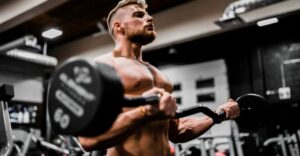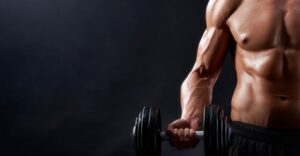WEIGHTLIFTING BELTS: THE ULTIMATE HOW TO GUIDE
Weightlifting belts are some of the most widely used fitness accessories but are often woefully misunderstood and misused. Lifting belts are not some a fashion accessory to match your new Gymshark vest, they are a valuable lifting tool that can help elevate your training and keep you safe.
WHAT IS THE PURPOSE OF A WEIGHTLIFTING BELT?
- Injury prevention and spinal resilience…
When we squat or deadlift heavy loads, our spine should remain perfectly rigid, not flexing at all. At loads close to our maximum capacities, weightlifting belts help offer stability and rigidity to the spinal column, by allowing the abdominals to brace against the pressure of the belt.
- Improved body biomechanics…
Research has indicated that the use of a lifting belt can promote better body mechanics. Using a lifting belt, helps us maintain improved spinal positioning (limits spinal flexion), while simultaneously increasing both hip and knee flexion (Granata et al., 1997). This shifts more load onto the glutes and quads, the muscles we are looking to primarily engage during lifts such as a squat or deadlift.
- Boost your performance…
A study by Jim Stoppani, made 12 trained lifters (they had trained consistently for 5+ years) perform a 1RM back squat both with and without a weightlifting belt, on 2 separate occasions. Just through wearing a weightlifting belt he recorded an average increase of 10 pounds compared to their attempt without a belt.
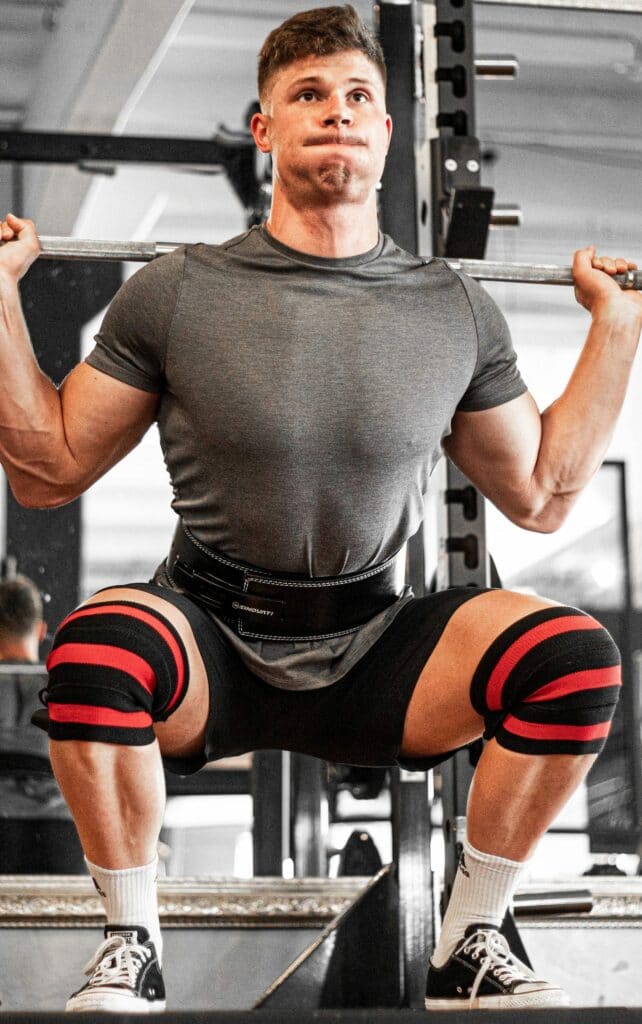
TYPES OF WEIGHTLIFTING BELTS
Body Building Belts
Powerlifting Belts
Velcro Belts

Body Building Belts
A bodybuilding belt is traditionally constructed of leather, thin on the front and thick on the back. The back portion is a wider than the front and traditionally feature a steel buckle for added security. For the intermediate gym goer this belt is great option.
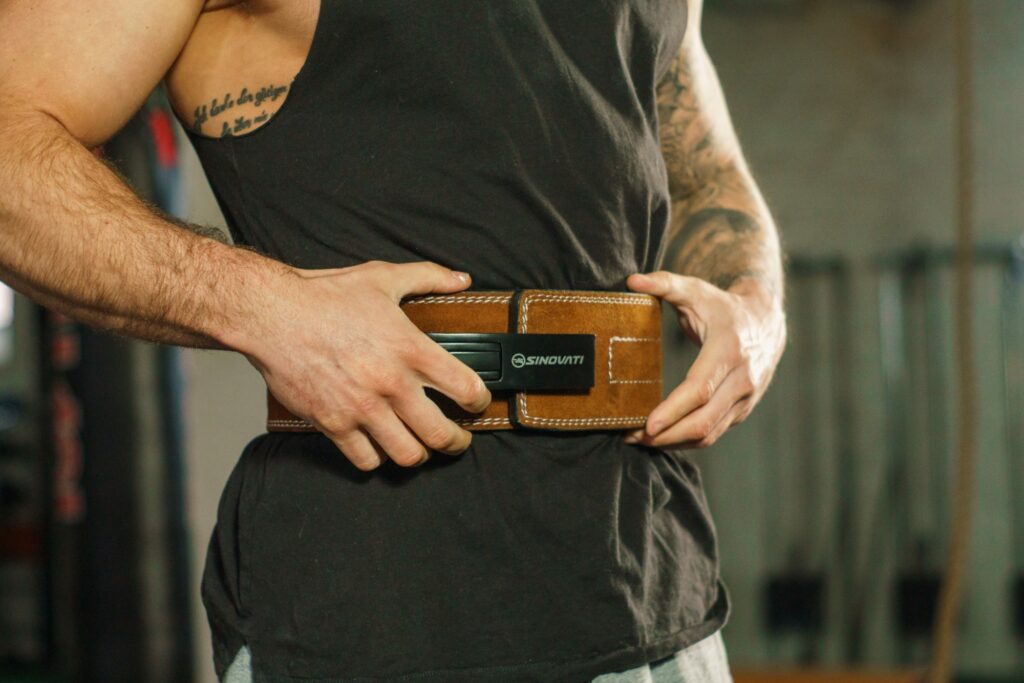
Powerlifting Belts
The most rigid form of belt that you can buy. Featuring a consistent width throughout, powerlifting belts offer a greater surface area on the front of the belt for the abdominals to brace against. These belts allow for the maximum amount of internal abdominal pressure to be generated, providing greater spinal stability. The best option for powerlifters and lifters who frequently lift at very high percentages.

Velcro Belts
These belts are the weakest of the 3. Velcro belts are only capable of bearing limited force (restricted by the strength of the Velcro strap). This restricts the amount of intraabdominal pressure a lifter can generate. Not recommend if you are an intermediate or advanced lifter looking to lift heavier loads.
Unless you are anything more than an absolute beginner, don’t even consider a Velcro belt. The assistance it provides and loads it can bear are simply too small. A leather belt is by far your best bet, whether that be a powerlifting or bodybuilding belt.
HOW TO USE A LIFTING BELT?
So now we’ve identified which belt is best, lets discuss how to use one. As I’m sure you’ve guessed, there’s far more to just strapping a belt to your midline and hitting a PB back squat. To reap the maximum benefits, a weightlifting belt must be applied properly. It is generally recommended to wear your belt at loads above 70% of your 1RM.
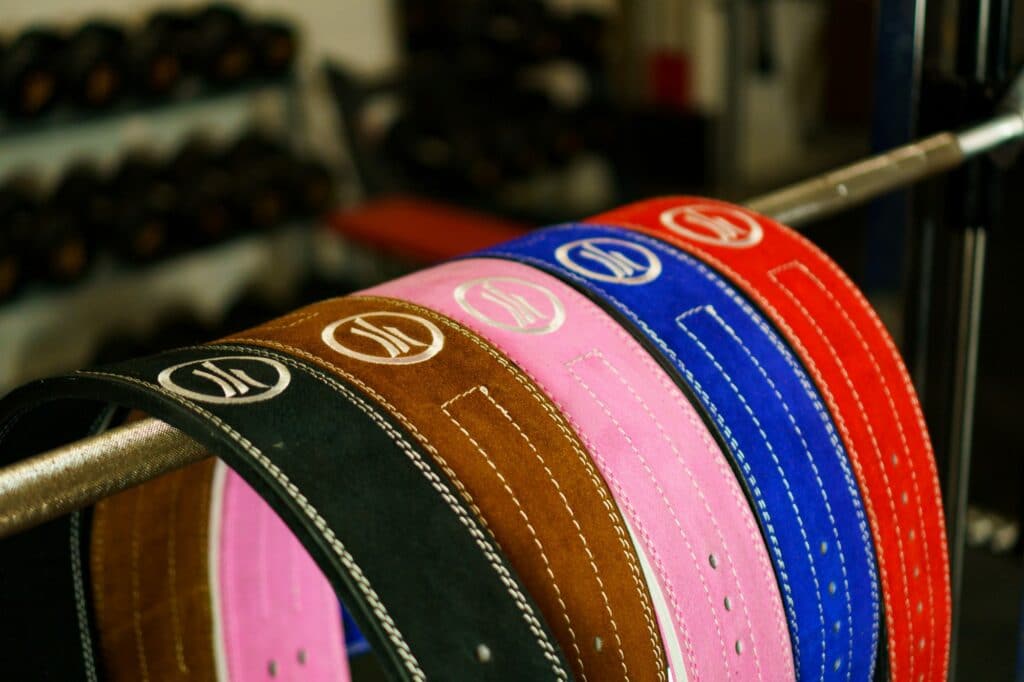
Step 1: first things first
The weightlifting belt should be placed around your waist and sit just above the hip bone. There should be complete contact between the belt and the circumference of your hip area (back, sides and torso).
Step 2: tight is right
There is no point having your lifting belt flapping around your midriff like a saggy kite. The belt should sit tightly around your torse, but not to the point where your about to pass out. Inhale slightly and pull the belt snug. After you exhale you should feel pressure between the belt and your stomach/back.
Step 3: brace into the belt
You are now ready to lift some tin. Breath into your belly, brace the core muscle of your core, your abdominals, and your lower back. The belt will allow you to brace more aggressively, resulting in a more stable, and rigid spine. Hold this brace for the duration of your lift.
For example, when doing a set of squats, brace as instructed above, hold this brace for both the descent and ascent of your repetition, exhale at the top and reset. Repeat for each repetition in the set.
THE VERDICT
A weightlifting belt can be a great way to supplement your strength training, offer spinal support and help prevent injury. However, they should not be used without first mastering correct form and lifting principles, or at the expense of proper mechanics. Master your lifting technique first, then add the weightlifting belt later. Your spine will thank you in the long run.

